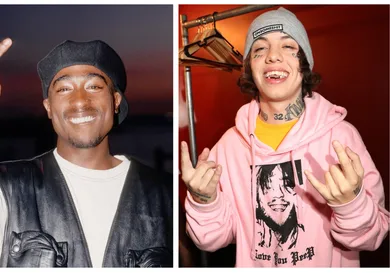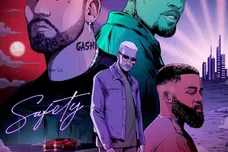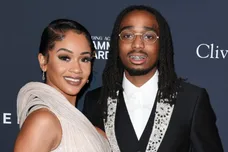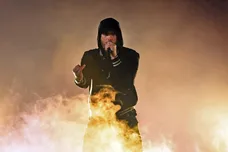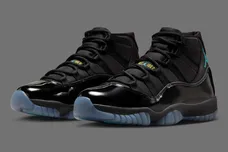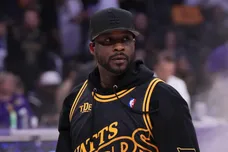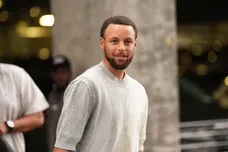When Lil Xan dismissed Tupac Shakur’s music as “boring” in a Revolt TV “On Clout 9” episode, the immediate response was disbelief. How could a 21-year-old rapper not comprehend the significance of Tupac’s legacy? Disbelief quickly transformed into swift and merciless public outrage, as everyone from Charlamagne Tha God to Michael Rapaport took part in relentless bashing. And in the now infamous Revolt episode, the network quickly followed up Xan’s controversial comments with a disclaimer, as if anticipating the overwhelming backlash that would stem from such an inflammatory response.
Everyone is entitled to their opinion. Opinions keep things moving, even if a decisive conclusion is never reached. Yet with the democratization of music criticism, everyone has become a critic. Yes, the flood of opinions that continually clog online forums and comment sections do help to disrupt consensus. But they also don’t generate much substantive debate. Rather, people are content to grab onto the coattails of those around them and ride certain opinions into the ground. Opinions no longer function as intended, but are instead accepted as truths. You either hate something or love it; there is no in between. People have become so quick to judge that there is little room for much else, which explains why first-impressions have come to be valued so heavily.
It’s not difficult to see why so many members of the community would be unenthused about someone like Lil Xan making flippant remarks concerning a hip hop legend. His boyish appearance, various face tattoos, and name, which is inspired by his past addiction to Xanax, make him an easy target. The rising popularity of “SoundCloud rappers” such as Lil Xan is perceived by some to be the doomsday of hip hop. Members of the older generation believe that music has become superficial and that young artists stopped caring about the culture, instead only interested in their 15 minutes of fame.
Still, there has always been a rapper, or rappers, that fans and critics alike have deemed to be the beginning of the end. Waka Flocka was one of the first to vehemently call out Lil Xan, even going so far as to proclaim that the Los Angeles-based rapper was “banned from hip hop.” Yet during Waka’s own time in the spotlight, he was publicly lambasted for his music. Many believed that his brand of unrefined, bombastic crunk represented everything wrong with with the direction that hip hop was trending. And in truly ironic fashion, he was criticized for titling his debut studio album Flockaveli, which is an adaptation of Tupac’s pseudonym “Makaveli.”
More to the point, a great deal of hip hop music currently being made isn’t groundbreaking or worthwhile, but that’s been the case for every generation. “Wack” rap is simply more accessible now than it ever has been because of how easy it is for anyone to create, upload, and discover music. The concept of “virality” wouldn’t emerge until the creation of YouTube in 2005, and even then, viral “SoundCloud rap” didn’t enter the wider vernacular until the mid 2010s.
Before the advent of the internet, there was a very precise process of creating and putting out music. A prospective artist had to garner respect from their peers by investing in their sound and image, at which point they would then have to spend money to get studio time; there was no way to circumvent the system. Now, there’s no longer a method to the madness. Anyone with a computer can create an instrumental, record a song, and then proceed to put it out, all within the span of minutes. Gone are the days of buying physical copies of an artist’s music, a holistic ritual that the older generation once held dear, which has now been simplified to a few clicks. Online forums and comment sections have become the new arenas in which fiery debates rage. The playing field is getting bigger, the rules are changing, and artists are having to make more noise than ever in order to get noticed.
The next generation is thriving under the conditions generated by the rise of the internet. Yet older artists don’t see newfound opportunities so much as they see young artists tearing down what they worked so hard to create. To be fair, the threshold to enter hip hop has been lowered significantly over the years. Hip hop is no doubt more diverse than it was in the 80s and 90s, but it’s also oversaturated. The overall ubiquity of rap has created an environment in which there’s zero quality control. As a result, it has become even more laborious to sift through the many layers of garbage to find quality music.
In addition, the perception that personality now trumps lyrical skill certainly has some truth to it. An overall lack of creativity and originality are no longer factors that severely hinder an artist’s potential for success. Marketability and adherence to trends are now vastly more important, something that many young artists such as Lil Pump and Tekashi 6ix9ine are picking up on. Just as listeners’ attention spans have become shorter, so too have the careers of the next generation: young artists have become passing attractions in the sense that many become obsolete as soon as they hit pay dirt. The revolving doors are moving so unbelievably fast that it has become virtually impossible to keep track of artists from one year to the next. For any rapper trying to make it in the world of hip hop, the mission is simple and straightforward: blow up overnight with as little effort as possible.
But hip hop has never entirely been about paving the way for future generations. It’s an unforgiving world into which many young artists are thrust without much guidance. The older generation has been quick to chastise newcomers for their lack of humility and respect for those who came before them and will in turn follow in their footsteps; they feel that the champions of music history are few and far between. This begs the question: why should a rapper care about those who will come after them? Now so more than ever, rappers are realizing that the teens in their bedrooms creating music are the ones who are coming for their spots at the top. This "survival of the fittest" mentality has been a mainstay of hip hop ever since its inception. The struggle and grit of the music of the older generation may no longer play as prominent a role in the music of the new generation, but that doesn’t mean it isn’t present; it’s just taken on a different shape. Artists of the older generation remain deeply nostalgic and pine for sounds that are long past their heyday, whereas the artists of tomorrow are focused solely on the uncertainty of the future. It’s an increasingly bleak reality for the next generation: either keep up or get left behind.
Old school hip hop has always prided itself as a reckoning: it was coming from a generation of maligned, forgotten youngsters who were rebelling against a repressive system that wanted nothing more than to silence them. For Public Enemy, rap music was therapeutic. For others like 2 Live Crew, it was a protest against censorship. And for a group such as N.W.A., it was a blatant rejection of the establishment. Unique sounds and styles emerged on the streets, made their way into studios, and gradually worked their way up to mass appeal; it was an organic process. Now, those same sounds and styles can be replicated in a studio in mere minutes, something that the older generation has not been eager to embrace. Many feel that the use of kits and premade sounds has created a largely homogenous environment in which it is often difficult to differentiate one song from the next; the heart and soul of handmade music has largely been replaced by the work of computers. Artists rarely do “digging” anymore: the process of reimagining and revitalizing old music through the use of sampling, something that Kanye West mastered, is not as popular as it was in the past.
That being said, there are still plenty of artists who are making music that is pushing the boundaries of hip hop in remarkable new directions. Kendrick Lamar’s ascension to superstardom with innovative albums like Good Kid, M.A.A.D. City, To Pimp A Butterfly, and DAMN. signified that there is still plenty of room for socially conscious and politically charged rap music in the mainstream. A$AP Rocky’s early use of the Houston chopped and screwed sound was reinvigorating. Artists like Future, Young Thug, and Migos commercialized drug-infused, trunk-rattling Atlanta trap music in a way that had never been seen or heard before. Even the combination of sounds and styles that Lil Peep was experimenting with prior to his tragic death were unique, and may yet prove to be revolutionary as his disciples continue to merge elements of emo, punk, and rock.
There’s no denying the significant role that artists like Tupac played in the lives of a great many hip hop fans. Yet for some members of the younger generation, Tupac may not have had a direct impact on their musical upbringing. Many millennials grew up listening to Lil Wayne, 50 Cent, and Kanye West, artists who dominated the airwaves of the 2000s just like Tupac did in the 90s. These generational divides can form in as little as two to three years, which just goes to show how unrelenting the music industry has become. Chief Keef, who emerged with his debut album Finally Rich in 2012, is only 22-years-old, yet his nihilistic, abrasive sound from just five years ago feels dated. Similarly, Rae Sremmurd burst onto the scene in early 2014 with “No Flex Zone,” the Mike-WiLL-Made-It-produced banger that hinted at big things to come for the brothers from Tupelo, Mississippi. And while the young rap duo continues to churn out Billboard hits, they are part of an entirely different generation than the teens and twenty-somethings emerging in hip hop in 2018.
For a genre that is still very much in its infancy, hip hop has never been kind to those who fall behind. Given the competitive nature of the genre and how fast-paced it has become in recent years, it’s no wonder that many artists of the older generation have been unwilling to accept how the times have changed, and as a result, they have had difficulty aging gracefully. Hip hop has always been a young man’s game; JAY-Z is the exception, not the rule. What the Lil Xan incident did reveal is that hip hop’s generation gap is growing, and it’s not going anywhere anytime soon. The older generation remains skeptical of and doesn’t give much credence to the wide-ranging tools and avenues that are now available to the young artists of tomorrow. Artists from the older generation seem to forget that at one time, they were once young artists who faced similar criticisms for their lyrical content and musical direction. As for the new generation, some don’t seem to care about their heritage, or simply can’t be bothered to do the background research needed to acquire a respectable knowledge base. It’s a misunderstanding between cultures: standards have changed, and so has the discourse.
Still, there is hope of bridging the gap. Many artists of the older generation have embraced the new sounds and styles and have actually helped put on upcoming artists: Dr. Dre passed the torch to Kendrick Lamar and continues to steer the direction of West Coast hip hop; Kanye West has mentored and inspired innumerable artists including Kid Cudi, Travis Scott, and Chance the Rapper; Drake serves as perhaps the best contemporary example in terms of the impact that his melodic rap has had on the music of the next generation. Hip hop has progressed significantly and is now the most-consumed music in America, yet one thing remains true: people continue to get caught up in the sounds of the past.
